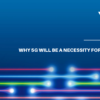Future for multimode fiber and the opportunities it presents to the data center market

In a data center environment, there are several key considerations that go into whether to deploy a multimode fiber, short-wavelength or a single mode-fiber-based, long-wavelength optical network. As they continue to drive critical business processes with fiber-optic connectivity as their backbone to allow connection with link servers, storage systems, and switches, both data centers and fiber optics are becoming essential components to ensure effective continuity of daily operations and processes of businesses.
As such, it is highly crucial for data center to select the right fiber type for the use case in order to ensure the best affordability, connectivity, and long-term future proofing. Data center technicians typically have two high-level options when it comes to selecting fiber types: multimode and single mode fiber. This brings the big question: Which offers the most advantages, and in what use case?
In this post, we will explore the benefits and opportunities from multimode fiber in the data center.
Multimode Fiber (MMF) is still the front runner in modern Enterprise Data Centers. It was first deployed in the early 1980s with a light-carrying core diameter of around 6 times larger than that of single mode fiber. MMF provides a logical solution to the alignment challenge that is getting light into and out of the cabling efficiency.
The key and most widely known benefit of using multimode fiber is that it is a low-cost way to transport high data rates over relatively shorter or smaller distances. In fact, MMF has long been the mainstay of data center networks due to its ability to provide an economical system for high-speed connections between servers, switches, and storage. MMF has evolved from being optimized for multi-megabit-per-second transmission using LED light sources to being optimized for supporting multi gigabit transmission using 850m VCSEL (Vertical Cavity Surface Emitting Laser), which tend to be more affordable than their single mode counterparts.
For instance, the advantage of MMF also comes from its core size. Its core size is considerably larger than single-mode fiber, thus it can guide multiple modes and is better at capturing light from a transceiver. Consequently, this decreases alignment costs and leads to cost-savings in the long run due to lower cost connectivity, installation, lower power consumption and ongoing maintenance and usability, despite the higher cost of the multimode fiber itself.
However, higher data rates are the priority in today’s market. The release of 5G in the wider market will increase bandwidth by twenty-fold, which brings up the question of whether multimode fiber will be able to cope. Discussions and speculations of whether the largest hyper scale data centers are expecting to adopt only single-mode fiber going forward are already emerging in the industry. However, this doesn’t mean that the industry is rushing to migrate, according to John Kamino and Mabud Choudhury, product manager and standards manager at OFS Optics, respectively.
Both argued that multimode technology is seeing a promising future as they continue to evolve and thus can support higher speeds. Moreover, it is still the most economically efficient option for low power, short reach applications in the data center. One of the reasons is the ability to use multimode tech with cheaper VCSELs (Vertical-Cavity Surface-Emitting Laser) transmitters, which in turn lowers the system’s cost. The cost advantages brought by VCSELs comes from their ease of manufacturing and integration, as well as reliability, testability, and power efficiency.
In fact, many of the other markets outside data centers are also using multimode solutions. For instance, the continuously growing Ethernet market widely uses multimode and/or VCSEL-based optics. Similarly, more than 90% of Fiber Channel links use the combination of multimode and VCSELs, which is predicted to continue into the foreseeable future. Additionally, LightCounting predicts continued strong growth for 25G to 400G multimode optical modules from 2019 to 2024. As such, the data center market is expected to continue having a strong and growing demand for short-reach and low-cost multimode solutions.
Regardless of whether you choose to deploy a multimode fiber or a single mode fiber, you must inspect and clean before you connect. This is because contaminated connectors, caused by quality and cleanliness issues, are still the main culprit for fiber optic problems faced by technicians. VIAVI provides a range of fiber optic tools to help you effectively install, maintain, and test your fiber optic networks while ensuring optimal performance. With a proper fiber optic inspection, the testing and monitoring available at VIAVI can assure you to receive appropriate tool sets moving forward with the multimode technology.



